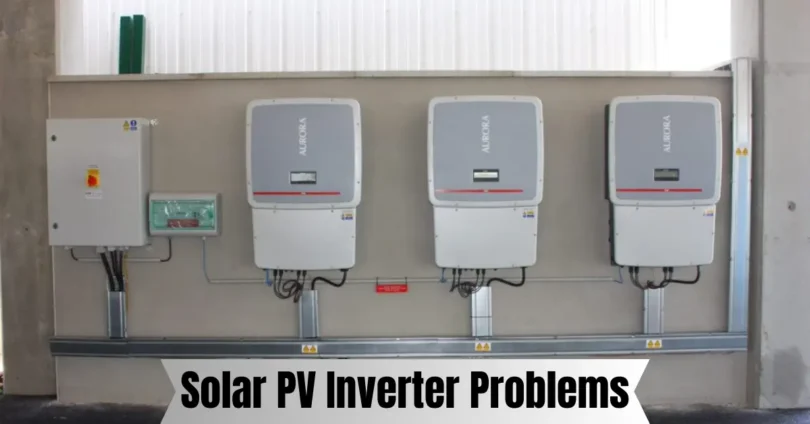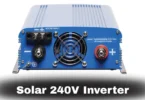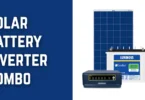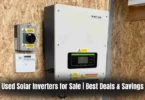A solar PV inverter is a key component in a solar energy system. It converts the DC (direct current) power generated by solar panels into AC (alternating current) power, which can be used in your home or business. However, like any piece of technology, solar PV inverters can sometimes face problems.
These issues can affect the overall performance of your system, leading to less energy production or even complete system failure. In this article, we’ll look at some common solar PV inverter problems, how to identify them, and what you can do to fix or prevent them.
Common Solar PV Inverter Problems
Solar PV Inverter Not Turning On
Possible Causes:
- Power failure: The inverter might not turn on if there’s a power outage or an issue with the grid connection.
- Fuse issues: A blown fuse can stop the inverter from starting.
- Wiring problems: Loose or disconnected wires can cause the inverter to fail to turn on.
Quick Fixes or Checks:
- Check for power supply: Make sure the inverter is getting power from the grid or battery.
- Inspect the fuse: Replace any blown fuses.
- Examine wiring connections: Look for any loose or damaged wires and fix them.
Solar PV Inverter Showing Error Codes
Common Error Codes and What They Mean:
- “AC Overload”: This indicates that the inverter is trying to handle more power than it can manage.
- “Grid Connection Error”: A problem with the grid connection could be causing this error.
- “Temperature Fault”: This suggests the inverter has overheated.
How to Troubleshoot Error Codes:
- Refer to the manual: Error codes are usually explained in the inverter’s user manual.
- Reset the inverter: Try turning the inverter off and on to see if the error clears.
- Contact support: If the error persists, it’s a good idea to contact the inverter’s customer service for further assistance.
Low Solar Output or Efficiency
Causes:
- Shading: Trees, buildings, or other obstructions may block sunlight from reaching the panels.
- Panel dirt: Dust or dirt on the solar panels can reduce their ability to capture sunlight.
- Inverter overload: When the inverter is asked to handle more power than it is rated for, it can become less efficient.
Tips to Optimize System Performance:
- Keep panels clean: Regularly clean your solar panels to remove dust and debris.
- Ensure proper sunlight exposure: Trim trees or remove obstacles that block sunlight from reaching your panels.
- Check inverter capacity: Make sure your inverter is properly sized for your solar panel system.
Solar PV Inverter Overheating
Why Overheating Happens:
- Poor ventilation: Inverters need space around them for proper airflow. Without good ventilation, they can overheat.
- Ambient temperature: Extremely high temperatures in summer can cause the inverter to overheat.
Steps to Prevent Overheating:
- Ensure proper airflow: Install the inverter in a well-ventilated area, free from obstructions.
- Monitor temperature: Keep an eye on the temperature of the inverter, especially during hot weather.
- Use a cooler location: If possible, place the inverter in a cooler, shaded area to prevent overheating.
How to Diagnose Solar PV Inverter Problems
Visual Inspections
Key Checks:
- Look for Error Lights: Check the inverter’s display for any error lights or warning signs.
- Check for Physical Damage: Inspect the inverter for any visible damage, such as cracks or burns.
- Examine Cables and Connections: Look for any loose, frayed, or disconnected cables.
Use Monitoring Systems
Key Checks:
- Check System Data: Use your solar system’s monitoring app to check the performance of your inverter.
- Look for Decreased Output: Compare the current output with past performance to identify any dips.
- Monitor Error Codes: Many monitoring systems will display error codes to help identify problems.
Check the Inverter’s Settings
Key Checks:
- Review the Configuration: Ensure the inverter settings are correct and match the specifications of your solar system.
- Verify System Size: Check if the inverter is suitable for your solar panel array’s output capacity.
- Check Voltage and Current: Use a multimeter to ensure the input and output voltages are within range.
Inspect the Solar Panels
Key Checks:
- Look for Shading or Dirt: Check if there’s any shading, dirt, or debris on the panels that may reduce their efficiency.
- Examine Panel Condition: Inspect panels for cracks, discoloration, or damage.
- Check Connections: Ensure all cables connecting the panels to the inverter are secure.
Call a Professional Technician
Key Checks:
- When in Doubt: If you’ve gone through all the above steps and the problem persists, it’s time to call a technician.
- Inverter Warranty: Many inverters come with warranties, so a technician might be able to repair or replace the unit under warranty.
- Regular Maintenance: Schedule regular professional maintenance to keep the system in top condition.
Preventive Measures to Avoid Solar PV Inverter Problems
Regular Maintenance
Key Measures:
- Inspect the inverter every 6 months: Regular inspections help catch issues early.
- Clean the panels: Clean solar panels at least twice a year to maintain efficiency.
- Check for loose connections: Tighten any loose wires or terminals to prevent electrical issues.
Proper Installation
Key Measures:
- Follow manufacturer guidelines: Ensure the inverter is installed according to the manufacturer’s instructions.
- Place the inverter in a well-ventilated area: Adequate airflow prevents overheating.
- Use quality components: Invest in reliable cables and connectors to reduce system failures.
Monitor Performance Regularly
Key Measures:
- Track energy output: Use monitoring apps to keep an eye on system performance.
- Set up alerts for low performance: Many systems allow you to set alerts if energy output drops below a certain level.
- Review error codes: Regularly check for any error codes and address them promptly.
Protect Against External Factors
Key Measures:
- Ensure proper shading: Trim trees and clear debris around the solar panels to avoid shading.
- Check for dust and dirt: Clean your panels regularly to prevent dirt buildup, which can reduce output.
- Protect against extreme weather: Consider adding protection for the inverter in areas with extreme temperatures or storms.
Upgrade the System When Needed
Key Measures:
- Check inverter capacity: As your solar system grows, ensure the inverter is still sufficient for the new load.
- Update software: Keep the inverter’s software up-to-date to avoid bugs or malfunctions.
- Replace outdated parts: Swap out older components that might be causing inefficiency or issues.
Frequently Asked Questions About Solar PV Inverter Problems
What causes a solar PV inverter to stop working?
A solar PV inverter may stop working due to power failure, blown fuses, loose wiring, or overheating. Checking these issues can help you diagnose the problem.
How can I tell if my solar PV inverter is faulty?
If your inverter is showing error codes, not turning on, or your solar output has dropped significantly, it could be a sign of a problem. You can also check the inverter’s display or use a monitoring system to spot issues.
Can I fix my solar PV inverter myself?
Minor issues, like checking connections or resetting the inverter, can often be fixed yourself. However, for more complex problems, it’s best to call a professional technician to avoid further damage.
How can I prevent my solar PV inverter from overheating?
Make sure your inverter is installed in a well-ventilated area, away from direct sunlight or heat sources. Regularly clean the inverter to keep it cool and efficient.
How often should I maintain my solar PV inverter?
It’s recommended to check your inverter every 6 months and clean your panels at least twice a year. Regular maintenance helps prevent issues before they become big problems.
What should I do if my inverter shows an error code?
First, refer to the inverter’s manual to understand the code. You can try resetting the inverter or checking for issues like wiring problems. If the error persists, contact customer support or a professional.
How long do solar PV inverters last?
Most solar PV inverters last around 10-15 years. Regular maintenance can help extend their lifespan and ensure they perform optimally.
Conclusion
Understanding and addressing solar PV inverter problems is key to keeping your solar system working efficiently. Regular maintenance, proper installation, and monitoring performance can help prevent most issues.
By taking simple steps to protect and care for your inverter, you can avoid costly repairs and ensure your system runs smoothly for years. If you spot any problems, act early to keep things running at their best.




